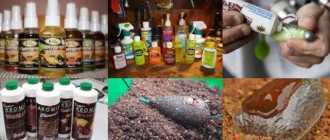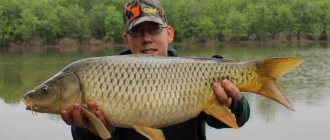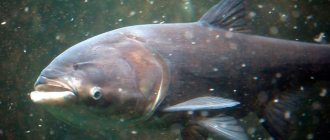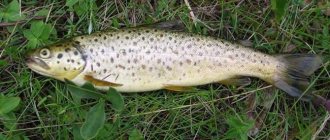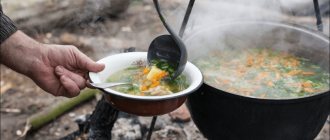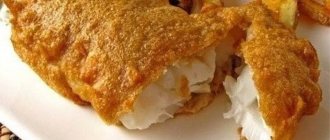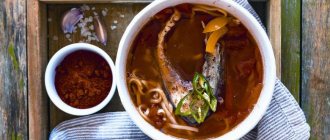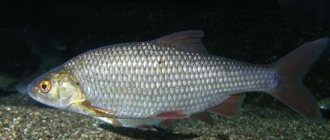Buy quality products at affordable prices in the best fishing online stores
. Give gifts to yourself and your loved ones!
we are in social networks
— subscribe to us on Facebook, Youtube, VKontakte and Instagram. Stay up to date with the latest site news.
On our website you can find the following information about this fish:
| Vobla | Fishing by season | Tackle | Groundbaits |
| Fishing methods: | feeder | fishing rod | rubber band |
| Predatory fish | Peaceful fish | Fisherman's kitchen | Video |
Distinctive features of the roach
One of its distinctive features is that the roach lives in large schools. In order to protect itself from enemies when predators approach, it adheres to large fish. Externally, it is a wide fish, the sides are flattened, the scales are large, the back is black, and the belly has a golden tint.
| Scientific classification | |
| Domain | Eukaryotes |
| Kingdom | Animals |
| Type | Chordata |
| Class | Ray-finned fish |
| Squad | Carp-like |
| Family | Carp |
| Genus | Roach |
| View | Vobla |
| International scientific name | Rutilus caspicus |
This fish is often confused with roach, a river fish. You can distinguish a roach from a roach by certain characteristics: the first is larger, its fins are gray with a black border, there are black spots above the pupil, the abdomen has a bluish-golden tint.
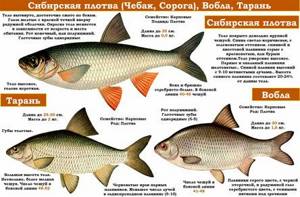
Roach, Taran and Siberian roach (click to enlarge the picture)
Many people argue about the difference between ram and roach and rudd and roach, and which fish tastes better. It turns out that ram, rudd and roach are related forms of roach. Roaches feed on plants; when there is a lack of food, the family begins migration in the hope of profit and moves from fresh water to sea water. Fish caught in the reservoirs of the Caspian Sea is called roach.
Roach differs from roach and roach in body shape: roach is more thick. The rudd is distinguished by its bright color, golden body, and red fins. “There is no friend for taste and color,” but only true gourmets and fish connoisseurs can distinguish each representative of the carp family by taste.
Origin of the species and description
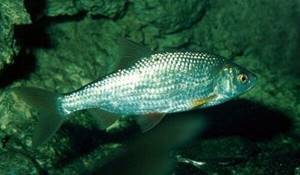
Photo: Vobla
The roach belongs to the family of Carpidae, ray-finned fish. Externally, it is a fish very similar to a roach. According to some sources, it is sometimes even classified as a roach, simply distinguished as a variety of that species. In fact, this is an independent species that has important distinctive features that make it possible to identify the roach.
The roach got its name back in Rus' because of its round shape. By the way, in those days many people even called her “mad”. The reason was her very active behavior. When male and female wobbles rush to spawn in river mouths, it is simply impossible to keep up with them. Therefore, their behavior is really unlike other fish - they are too active in breaking through other schools of fish to their goal.
Video: Vobla
The length of an adult roach is about 30 cm, and its weight is up to 0.2 kg. Larger individuals are also found. The main distinguishing feature of the roach is the V-shaped tail fin and the reddish tint of the scales.
Now in the Caspian Sea it is customary to distinguish 3 main herds of roach:
- Turkmen;
- North Caspian;
- Azerbaijani.
These fish do not have any special external differences between each other. The only thing that distinguishes them is their habitat (both in the sea and in relation to the rivers into which they enter).
In total, the roach lives for about 10 years. During this time, she goes to spawn 5-6 times. Each time she lays up to 30 thousand small eggs. After this, the fish’s body loses so much weight that it looks twice as thin as its head.
Interesting fact: Frederick the Great was the first to appreciate roach as a beer snack. It was from those times that vobla was considered ideal in this matter and became a real symbol of beer snacks.
Where is the roach found?
Vobla is a marine fish. Although many people believe that its main habitat is the river, this is not so. Vobla enters rivers only during the spawning period, which usually lasts from March to May. The fish is found in the Caspian Sea and comes to spawn at the mouth of the Volga and other small rivers. Some representatives of the roach remain in spawning areas, but this is the exception rather than the rule. The river fish roach usually does not rise above Volgograd. The largest catch is observed in Astrakhan and coastal villages.
There are three separate schools of fish, which are found in the southeastern, northern, southwestern and southern parts of the Caspian Sea. Each herd has its own name:
- Turkmen.
- North Caspian.
- Azerbaijani.
After the spawning period has passed and the fish has returned to the sea, it usually lives at a depth of up to 5 meters and tries not to swim into coastal areas. In the summer, fattening occurs, and in the fall the fish begin to build pits for wintering in close proximity to the shore.
Appearance and features
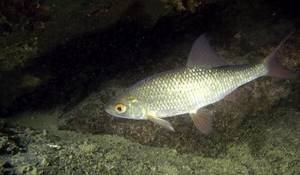
Photo: What a roach looks like
Since roach and roach are often confused, an important difference between them should immediately be clarified: roach is much larger. The length of an adult is 30-40 cm, and the weight is 0.6-0.7 kg, although some can reach 1 kg. The body of the fish is flattened, but the sides remain prominent. A small hump is clearly visible on the back of the roach, but the back of the roach is absolutely flat. The scales are small and fit very tightly to the body.
At the top, the color of the scales is very dark, reminiscent of black. But downwards it gradually begins to give off a silvery tint more and more. The head of the roach is small, the mouth is also set low. The iris of the roach's eye is silver or orange. There are clearly visible black dots above the pupil.
All fins of the roach are large and clearly distinguishable. The caudal fin is in the shape of the Latin letter V, divided into 2 equal parts. Unlike other similar fish, the roach's tail fin seems to be slightly twisted.
All fins of the roach have a slight red tint and a dark edging along the edge. The anal fin is quite long. All this distinguishes the roach from the roach, with which it is often confused. If you know all the subtleties, then you will be able to easily distinguish the roach. That is, although it is a close relative of the roach, it will not be difficult to distinguish them from each other if you know a few simple rules.
Interesting fact: The largest roach that has ever been recorded weighs 850 grams.
Roach tackle

You can catch roach with any gear. These can be bottom fishing rods or ordinary float rods, but at least 6-7 meters long due to the flood. It is unlikely that you will be able to catch even a single fish with a shorter float rod. You can use any fishing line, because during a flood, when the water is cloudy, a thick fishing line will not be able to alert the fish. The most suitable diameter is 0.25 mm, or even more. Hooks are selected No. 4, 5, 6 on the domestic scale. You can install up to 4 hooks on one tackle, although this will lead to inconvenience in use.
When using bottom gear or a feeder, you need to make sure that the rod test is at least 100 g. This is due to the fact that you have to use feeders weighing up to 100 g, since fishing is carried out in the current. If you use smaller weights, the tackle will be carried away by the current. You can also install at least 4 hooks on the bottom tackle to ensure effective fishing. It is advisable to use hooks with a long shank, which will guarantee a better hook and therefore minimize the number of fish escapes.
Range and habitats
The roach lives in a relatively limited range. It cannot be found anywhere except the Caspian Sea and large rivers in its basin, such as the Volga. Anyone who claims otherwise most likely confuses it with rudd, ram or roach. This species unites in large schools and swims in different parts of the Caspian Sea. So people conditionally divided this representative of the carp family into several groups with individual names, depending on their habitat. An Azerbaijani group is swimming in the southwest of the Caspian Sea, near the coast of Azerbaijan. The southeastern part is inhabited by a Turkmenistan group floating near Turkmenistan. The schools swimming near Russia and Kazakhstan are designated as the North Caspian group.
So that there is no doubt about who was caught in the coastal sea waters of the Caspian Sea, it should be remembered that roach does not leave river mouths and does not like sea water. The conclusion is obvious!
Although all roach live quietly in salty sea water, some of this species periodically rise up rivers. This happens when winter comes and the fish goes to look for a place where it will wait out the cold. The second case is spawning time. So you can divide individuals into two varieties - residential and semi-anadromous. The first leads a sedentary life, preferring not to change the situation and does not rise high along rivers to spawn. The latter, on the contrary, go on a long journey to find a suitable place. Observations and studies note that the semi-anadromous roach is larger than its sedentary counterparts, which is due to a more active lifestyle. Migrations occur at water temperatures not lower than 8°. Before extreme cold, schools look for deep holes in coastal waters that will not freeze and provide shelter for the fish. To withstand the cold, the body secretes abundant mucus, which covers the scales and prevents freezing. In the warm months there is active fattening for wintering. At this time, all individuals swim at a depth of up to 6 meters.
Where and when to catch roach

The roach lives only in the Caspian Sea basin, so with the onset of spring it begins to enter the Volga and rise against the current, simultaneously entering small tributaries. Thus, the roach returns to the places where it was born as a fry. This fact indicates that the fish is preparing for spawning. However, it does not rise very high and you may no longer find it outside of Volgograd.
Depending on weather conditions, the roach begins its movement either at the end of February or at the beginning of April. It all depends on how long the ice will remain on the reservoirs. But, basically this event takes place in the month of March.
It is most actively caught in April. During this period, she takes any bait. During the same period, a ban on catching roach is in effect. Therefore, you should pay attention to information that indicates when and in what places roach fishing is limited or prohibited altogether.
As a rule, roach fishing begins in Astrakhan, where fishermen from all over Russia and the CIS countries come. Vobla is especially tasty when dried and is ideal for ramming. Fans of low-alcohol drinks such as beer simply love drinking beer with dried roach.
Traditional places for catching roach:
- Chagan village and Chagan river.
- Nikolo-Komarovka village, Erik Chilimka.
- Volgo-Caspian village, Volozhka river.
- Krasnoyarsk region, Buzan river.
Fishing locations are not limited to this list. It is not difficult to imagine that it is more extensive. When the fish rises against the current, they begin to catch it in any available place.
What does roach eat?
Vobla is an omnivorous fish. But individual flocks and individuals have their own preferences. So the diet depends on where the flock lives. The best region with an abundance of food and favorable conditions is considered to be the North Caspian. There is no great depth here, but the choice of food is very large. Here, waterfowl eat mollusks, worms, crustaceans, underwater insects, larvae, corals, algae shoots and seeds. Plant foods are not the most favorite, but in times of shortage of animal components, roach is ready to switch to such a diet. Sometimes there are cases when, due to lack of food, adults eat their fry or the fry of other fish. But this happens very rarely and under very harsh natural conditions.
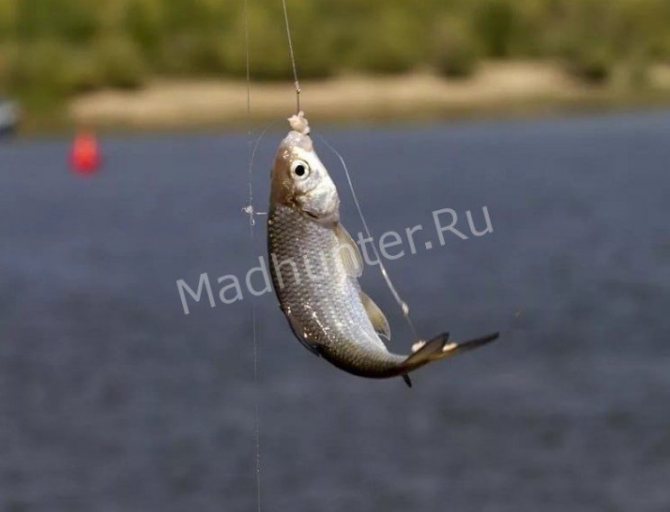
The basis for nutrition is still animal food. It accelerates the growth process, supplies everything necessary for existence, and helps to quickly gain fat. The young feed more actively, eating everything in sight. With age and increase in size, there is a decline in appetite, and the roach begins to eat less. The fry hatched at the mouths of rivers eat the same things as fry of bream or carp - rotifers, daphnia, insect larvae, worms.
Reproduction
Vobla can reproduce up to 6 times during its life. The eggs are deposited to a depth of 50 meters. The roach overwinters in the sea. In the fall, it approaches the banks of the Volga in large schools and continues to spend the winter in pits just before the mouth of the river. But it does not enter the estuaries themselves, unlike the Siberian roach. In early spring, sometimes at the end of winter, roach goes into the river. It depends on weather conditions. The cold delays the exit, and the wind from the sea, on the contrary, contributes to this process.
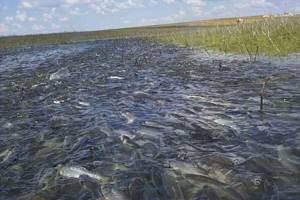
Some individual individuals begin to go into the river while still under the ice, somewhere in the second half of February. In March, the flow of fish increases, but it will finally start flowing in April, when the ice melts. Then schools of roach stretch along all the branches of the Volga, but it almost never goes further than Volgograd. Most of the fish still remain at the mouths of the river, looking for places to spawn, clogging all the channels and backwaters. At this time, a large number of roach die when they enter hollow places close to the shore. The water recedes and she remains on dry land.
When this breed of fish spawns, its appearance changes slightly. Warts form on the scales, and the so-called mating plumage appears on the head. Before the breeding season, the fish no longer takes food. Her stomach will be empty or filled with mucus. The roach will live on its own fat. The earlier the roach entered the river, the richer the fat it will be. After spawning, the fish will lose a lot of weight, become darker in color, and have an elongated shape. She goes to sea, losing her nuptial plumage, and again greedily rushes to feed.
Roach fishing
In April, fishermen begin to come to the banks of the Volga, and the fishing season begins. Hungry fish, after breeding, readily rush to bait. This period has restrictions on the number of fish caught, so it’s worth finding out in advance to avoid problems with the law.
Story
There were times when preference was given to expensive, red varieties of fish. Then it was noticed that the migration of roach occurs earlier than herring, they began to catch it, but on a small scale. The nutritional value and taste of roach were not immediately appreciated: earlier, when fishing, if it got caught in a net, fishermen often simply threw it away. In the difficult nineties, small and large businessmen decided to sell this fish and were right.
Fishing places
It is difficult to find a specific place on the river bank where a lot of fish are caught, since the roach is constantly on the move. Fishermen choose the area they like and wait for the flock, casting a donk or fishing rod. When the school approaches, the fisherman's hand gets tired of getting the fish, but soon there is a lull, the school swims away, and he again has to wait for the next school. The bait is cast further from the shore, since large fish live in the depths.
Fishing methods
They catch roach using bottom, float rods or a feeder. On the gear used, different attachments are used in the form of: hooks, hooks, weights, feeders. You can attach up to four hooks to a float rod. Since roach fishing takes place in the river flow, a weight or feeder for the feeder must be selected weighing at least 40 grams so that the river current does not carry it away. When the roach bites well, it is troublesome to get the heavy gear you use every time; a light rod is required. Fishing with a feeder with a thick line has become popular. A thick line (0.25 in diameter) does not frighten a hungry fish at all; on the contrary, it greedily pounces on the bait.
Lure
Various porridges with the addition of mixed feed serve as bait for roach. For better fishing, crushed earthworms or maggots should be added to the groundbait or groundbait. You can make bait yourself by finding recipes on the Internet, or purchase ready-made bait at a fishing store.
Vobla dishes
A creative approach and the use of different recipes for preparing fish in cooking makes it possible to preserve all the beneficial properties of roach. It can not only be dried, but also stewed, fried or cooked over a fire. Fish cooked over a fire, in addition to not only not causing harm to the body, on the contrary, will enrich the body with proteins and microelements.
Many people currently have chronic diseases, so they have contraindications for consuming dried and salted fish.
Salting roach
You can salt roach in the following ways: smoked fish (the method is applicable for young fish) and carbing (more mature fish with a lot of caviar are used). With the last method of salting, more salt is added and cuts are made on the sides of the fish.
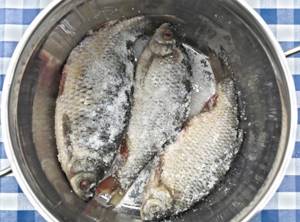
Salting roach
Salting process: Pour a layer of salt onto the bottom of the prepared container, then lay out one row of fish (if they are of different sizes, then start from the large one). Then salt again. We repeat this until the fish runs out. Thoroughly sprinkle everything on top with salt and cover with a lid. We wait 12 hours until the fish releases its juice, place the load and send it to a dark, cool place.
“Life without beer is like beer without a roach”
The best snack to go with beer is vobla! This truth was known to everyone back in the USSR. But getting this salted fish in those scarce times was very problematic. But some managed to get the roach if they had connections. Then people took the fish by the tail and beat it mercilessly on hard objects or held it over the fire, so the skin came off well. The result was a ready-made snack for beer. In those days there was not such a variety of beer as there is now; Zhigulevskoye beer and vobla raised the spirits of the male half of the country's population.
To learn more:
How to make bait for tench
Drying fish after salting
You can dry the roach after salting is completed; it is hung on the street on a “hanger”. If the weather is good and there is a breeze, the fish will be ready within a week. Sometimes, after drying, the roach is smoked: medium holes are dug in the ground, the top is covered with boards or branches, covered with earth, a window is left for air access, the fish is hung, a fire is built at the bottom of the hole, and the smoke comes out through the window. Due to the long smoking process, the price of smoked roach increases.
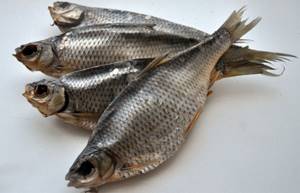
Dried roach
The method of preparing roach largely determines the preservation of its beneficial properties. Properly cooked fish helps prevent cardiovascular diseases, since it contains a large amount of fatty acids. Vobla is not very high in calories, so it is suitable for people who keep themselves in shape. Thanks to its properties, vobla has rightfully won its place in the market among gourmets and beer lovers.
Features of character and lifestyle
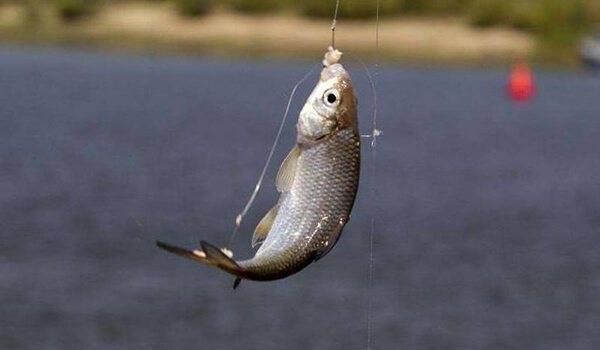
Photo: Vobla in Russia
Wobbles prefer to live in large schools. But during the migration process, they often have to join schools of larger fish, such as bream. This will help you escape from pike or pike perch. In addition to safety, such a neighborhood is also beneficial - the roach can feed on what the bream leaves on the bottom. Summer and autumn the roach is completely in the sea. There she actively feeds in order to gain the proper amount of fat before wintering.
Although in general the habits of the roach and its behavior are quite logical and constant, it will still not be possible to accurately guess the route along the river. The reason is that it mostly depends on the water temperature, the intensity of the flow and the depth. It is for this reason that sometimes certain difficulties arise when fishermen want to determine the spawning sites of roach. But if observed over several years, one can note a certain tendency in the migration of schools of roach.
If an individual does not reach the age of sexual maturity or does not go to spawn this year, then it does not leave its usual habitat and does not enter river beds, remaining in the sea throughout the year. The roach goes to river beds exclusively for spawning.
Interesting fact: The Azov ram, like the Siberian roach, is sometimes also called roach. It is not right! In fact, the roach is found exclusively in the Caspian Sea.
Fishing Features
Roach fishing begins in February, when the first shoals appear under the ice. The best winter fishing is in the estuaries of the lower Volga directly from the ice with winter fishing rods. During thaws, entire sections of the river open up, and you can fish in open water with float rods. It is important that the water is not very cold.
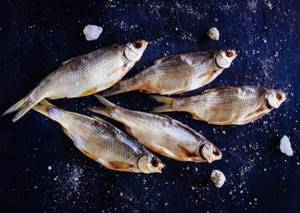
The fishing season begins in April. Then amateur fishermen flock to the Volga coast en masse. But catching roach during this period has restrictions, which you should familiarize yourself with in advance in order to avoid problems with the law.
There are some fishing features:
- The activity of biting depends on the location of the school's passage along the river.
- The roach bites from early morning until late evening; at night the fish are passive and indifferent to the bait.
- Local fishermen prefer shallow waters. The catch is richer, but there are also more chances of getting caught on the fishing line.
- It is better not to use more than 2 bottom gear, because there will simply be no time to rest.
- When planning an overnight stay, you should remember about frosts in April and take care of warm equipment.
The roach has a characteristic feature: with mass movement, the body becomes warmer. Having caught the first fish, you should hold it in your palms and determine whether the fish is coming in a school or as individuals. Using this method, local fishermen predict the future bite.
Lures for catching roach:
- worms;
- bloodworm;
- maggot;
- dough;
- corn;
- pearl barley.
Fishermen say that roach is partial to sweets. They recommend adding cookies and sugar to groundbait or prepared bait.
Tackle
Float and bottom fishing rods, as well as a feeder, are suitable for fishing. Attachments in the form of hooks, weights, hooks, and feeders are used. A float rod with five hooks is allowed, but it is more convenient to fish with three or four. To prevent the feeder from being carried away by the current, it is necessary to choose a feeder or a weight of more than 40 grams.
With a good bite, it is difficult to often take out heavy tackle, so a lightweight rod is preferable. You can use a thick fishing line. In the spring, hungry fish going to spawn are not afraid of anything, on the contrary, they greedily rush to any bait.
Artificial baits attract prey well: foam balls, beads, crumpled colored threads, etc. They are attached above the hook.
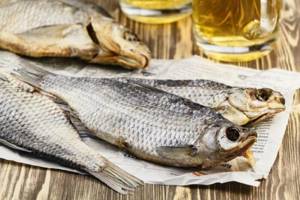
Lure
During periods of high activity there is no need to feed the roach, but the rest of the time this should definitely be done if you are interested in the result. But you will need active bait that moves vertically and horizontally, as if alive, that is, it does not remain lying on the bottom. Movement and smell from afar attract fish.
Groundbait is purchased in the form of ready-to-use mixtures for the carp family or prepared independently. Cereals or peas are suitable for homemade bait.
Peas are made this way:
- Two liters of water are poured into the pan.
- Add half a kilo of peas.
- Bring to a boil and leave to simmer for an hour over low heat.
- Boiled peas are pounded to a puree.
- Add unrefined vegetable oil and mix.
Already in nature, the puree is rolled into balls 5–7 cm in diameter with an additive from river soil and thrown to where a school of roach is supposed to be located. If the location is guessed correctly, the treat will definitely be noticed. Other joints will also be suitable for the meal.
Barley bait is prepared in the same way, but instead of vegetable oil, gingerbread or cookies are added. Experience shows that this is a favorite delicacy for roach.
Social structure and reproduction
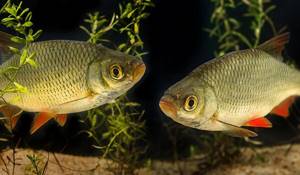
Photo: Voblas
The mating season for roach begins as soon as warming begins, that is, in the spring. The end of April is the optimal time. Mature roaches take part in this. They become such closer to 2 years of age, when they reach approximately 8 cm in length. In order for the female to bear more eggs, she must be larger. This is why males begin to participate in the mating season a year earlier than females. In the future, the female may miss 1-2 years, but the male participates in mating games every year.
When the fish is about to spawn, it stops feeding. Gradually her body becomes thinner. Energy comes entirely from fat reserves. The roach will begin to feed normally only when the mating season is over. The females set off earlier, but in the future the males will very soon catch up and overtake them, so they will reach the goal earlier. The females lay eggs and then return to the sea as soon as possible. This is necessary in order to quickly restore strength and lost fat. At this time, the males fertilize the eggs and also return back.
During the spawning period, the roach changes especially in appearance. This happens in 2 stages. At the beginning of the mating season, the roach is covered with a kind of silvery mucus to make it more noticeable. At this time, bumps appear on the head, and spiny growths appear on the scales. Active weight loss leads to the fact that at the end of spawning the head is so large that it stands out significantly against the background of the body. The egg size does not exceed a millimeter. Already in the first days it begins to grow actively. After a week, the larvae hatch, which will soon become fry and go to the sea with their parents. There they will mature and gain weight until the onset of puberty.
Interesting fact: When the roach is first brought ashore, it begins to secrete a special substance, which many consider to smell similar to sour beer.
Roach spawning
Somewhere from April to May, roach spawning occurs. This fish is unique in that it does not spawn every year. There are periods when spawning occurs after a year, and sometimes after two years. Most likely, this process is influenced by various factors related to weather conditions. Females begin to spawn at 3 years of age, and males are ready to fertilize eggs at 2 years of age.
Before spawning and during the spawning process, the fish begins to change. Characteristic growths in the form of warts appear on the roach's body. During this period, the fish completely refuses to eat, as a result of which it loses up to half its weight.
After the fish's spawning ends, it heads back to the sea, where it begins to feed heavily and gain weight. During spawning, quite a lot of roach die due to the fact that it tries to lay eggs at a depth of no more than 50 cm. In the event of a sharp rise in the water level, and then the same sharp withdrawal, the fish does not have time to go to depth and dies at these shallows.
After the fry are born, they also try to very quickly get into the sea, where they remain until puberty.
Natural enemies of roach
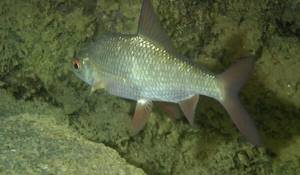
Photo: Roach fish
The roach, like any other creature in nature, faces a lot of dangers at every turn. One of the main dangers for fish today is humans. It is because of this that the number of many fish and animals is significantly reduced and the natural balance is disrupted.
If we talk about other dangers, then roach, like other small fish, is lurking in the water by predators. Vobla can easily become the target of medium or large fish. Fish are most susceptible to attacks during the spawning period. When it enters the mouths of rivers in large schools, animals there are not averse to profiting from it; they go straight into the water and easily catch the females, additionally immediately receiving caviar.
To escape from attackers, the roach often joins schools of other fish. Although there is less danger of this kind in the sea, there is no less a threat there - seagulls. They snatch the fish right out of the water, so it is very difficult for the wobbler to escape.
Another problem for roach is parasites. In inhabitants of exclusively sea waters, they practically do not occur, but in those who go into rivers, this often occurs. Worms, larvae - they affect various organs of the fish, significantly worsening its quality of life. Such fish will also become dangerous to humans in the future. To use the catch for food, it is important to subject it to thorough heat treatment. Otherwise, the fish is dangerous for the owner.
Although you can often find mention that fish are under threat due to human fishing, which becomes more active during spawning, in fact, roach has much more problems from nature itself. In spring there are very strong winds and rains. This leads to river flooding. Further, the roach, entering such shallows, does not have time to return to deeper areas, but the water recedes quickly. As a result, the fish simply remain on dry land and become easy prey for animals walking by.
In addition, sometimes the roach itself is simply thrown onto land. This is due to the fact that in shallow water there is simply not enough space for such large schools and then some individuals simply have nothing else left.
How to catch roach correctly
It is best to catch fish of this species during the spawning period, when they move in large schools into the rivers. The roach grabs everything in its path and you can often catch a big catch even in the absence of bait. The fish is perfect for fishing both for novice fishermen and experienced professionals.
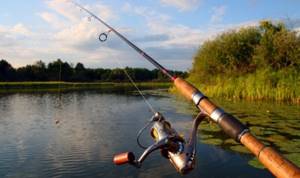
The best way to catch roach
In Astrakhan and nearby villages, fish are usually caught using the simplest gear - donka. The bottom consists of a fishing line, several hooks (1-8) and a sinker. In an economical version, a large nut can serve as a sinker. It is best to place the sinker below the hooks to level out tangling of the allowance. He considers 2-4 tackle to be the optimal number of hooks.
Other common fishing gear is float rods, but it is important that their length be more than 6-7 meters, since due to the flood the fish are located at a great distance from the shore, and the accuracy of casting depends on both the experience of the fisherman and the size of the rod.
Any line can be used when fishing for roach - during high water, due to the muddy water, the fish is not alarmed and calmly passes nearby. The optimal fishing line thickness is a diameter of 0.25 mm and above. When fishing for roach using a bottom fishing rod, the weight of the sinker should be more than 100 grams, which is determined by the high speed of the current. The optimal hook sizes for fish are numbers 4, 5 and 6. It is better to use hooks with a long shank, which will guarantee better hooking of the roach.
What is the best way to fish?
The main bait for roach is porridge with the addition of flour, halva or mixed feed. Also, if you plan to catch fish with a worm, then you can add chopped worms to complementary foods. There are purchased baits that are bred directly on the shore of the reservoir.
The most common baits for river roach fish are:
- Red or dung worm.
- Maggots.
- Canned corn.
In muddy water, some craftsmen catch roach using beads, feathers and bright artificial baits. For a more successful bite, experienced fishermen recommend hanging white beads above the hooks.
Features of roach fishing
Since the fish come in schools, the bite has a wave-like tendency. Vobla is caught very well with all baits and bait can have little effect on the result. Since fish spawning does not occur every year, in some years there is a decrease in the number of roach in the rivers.
Where is the best place to fish?
The main place for catching roach is the banks of the roach. Also, many fish have chosen the Akhtuba River, where during the spawning period you can catch a bucket of fish in literally 2 hours. Other popular places are:
- Chagan village and Chagan river.
- The village of Nikolo-Komarovka and Erik Chilimka.
- The Buzan River in the Krasnoyarsk Territory.
- The Volgo-Caspian village and the Volozhka river.
After the fish have left the coastal zones, there are many more fishing spots and many fishermen move upstream.
Population and species status

Photo: What a roach looks like
Since ancient times, fishing has been particularly widespread among all nationalities. It is worth considering that at that time there were not as many opportunities as there are now: the lack of a sufficient amount of equipment of the required level, a high crime rate - all this did not contribute to frequent trips to the seas over long distances. Against the backdrop of all this, those varieties of fish that could be caught without difficulty, without making long trips, were especially valued. Because of this, roach became valued - a universal fish in every sense, which was not particularly difficult to catch. Sometimes no labor was required - the roach often simply washes up on the shore itself and all that remains is to collect it.
Time passed and gradually the roach attracted special attention from industrialists working in this field. Fish were most often caught with nets, going a short distance into the sea or taking advantage of the moment when the fish went to spawn. Roach was always caught along with herring. But the latter went into the rivers earlier, so the hunt for it began earlier. Caviar is usually sold separately. It is separated from the fish carcass and sealed in a jar. The carcasses themselves are supplied at 100-300 thousand. The emphasis is on preparing the fish for long-term storage. That is why canned food, smoking, and drying are so popular. Until recently, the number of roach was so large that it was not difficult to catch it in any quantity without fear of its extinction. The roach lives in the Caspian Sea and in the lower Volga region.
Over the past few years, the number of roach has decreased by more than 6 times. Because of this, conservationists are sounding the alarm and calling for the protection of the species. It is possible that if the trend does not change for the better, the roach will soon be listed in the Red Book. To increase the number, they often began to breed roach artificially, after which the grown-up individuals were released into rivers and seas. This is done by specialized organizations, which also call for limiting the number of individuals caught. At the moment, no restrictions have been established in this regard. Roach is caught uncontrollably, not only with nets, but even with hands and nets. This is not difficult to do when the fish go to spawn.
Unfortunately, due to the low cost of fish, fishing farms are trying to buy in quantity, against the background of which the number continues to decline at a frantic pace. While other fish species are actively bred in nature reserves to preserve the species, no similar actions are taken with regard to roach. But in any case, the issue can only be resolved in relation to fishing. One should not discount the roach’s natural enemies, which also contribute to population decline. Recently, there is less and less other food in nature, so it is possible that natural animal enemies will become no less dangerous for the roach than humans.
Vobla is a popular fish throughout Russia that every fisherman knows. This is a tasty and recognizable fish, common in both fresh and salt waters. But in order to further preserve its population, it will be necessary to limit fishing or carry out additional artificial breeding.
Disadvantages of roach and its differences from roach
Sometimes you can hear the question: “Is roach a river or sea fish? And does she have any negative qualities?” This fish is very healthy, but has a drawback - it is inconvenient to eat due to the abundance of bones. Therefore, most often it is used dried, and in places where it is caught it can also be fried. It is not recommended to cook roach soups and fish soup. But when stewed, it is delicious.
The roach lives in the Caspian Sea. It forms herds - North Caspian, Turkmen and Kurin. The female usually lays up to 33,000 eggs. Fish mainly go to the Volga to spawn. Much less often - to Embu, Ural and Terek. It begins to spawn in April - May. Due to the drop in the level of the Caspian Sea, fish have significantly decreased in number. Conditions for wintering, fattening, and reproduction have worsened. Poaching also affects the situation.
There is a fish that looks like a roach - a roach. They are even confused or even considered one and the same. The roach differs from the river roach both in size and in the characteristic features of the eyes described above. Here you can also add the difference in its fins, which are gray with a black edging.
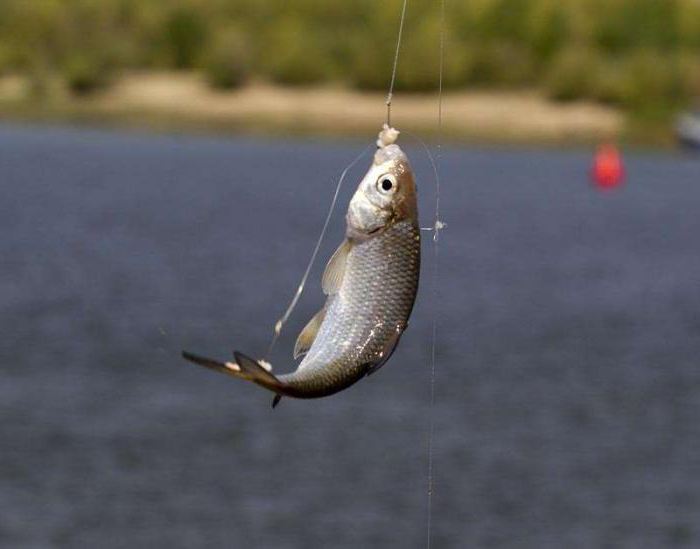
Start of vobla production in Russia
Residents of the Caspian Sea coasts consider vobla to be one of the traditional local fisheries. For the first time in Russia, vobla was tried in the 16th century, during the fall of the Astrakhan Khanate, when the troops of Ivan the Terrible came out and captured the shores of the Caspian Sea, whose waters are rich in fish resources. At that time, the dominant Russian dish in the kitchen was river fish. Large fish stocks of the Caspian Sea turned out to be a good find for new local residents, who began to actively engage in fishing. Since then, rapid development has begun, mainly of the northern shores of the Caspian Sea. And the most common type of fish in those waters, roach, began to be caught in very large quantities.
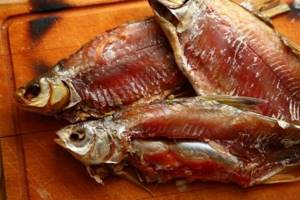
The ease of production, unpretentiousness of fish and its pleasant taste were warmly appreciated by our ancestors. For the fish procurement process, the Baskunchak and Elton lakes located near Astrakhan, famous for their large reserves of table salt, came in handy, which determined a profitable and simple way to prepare roach - drying . Thanks to the special climate and suitable conditions of these places, fish in the Astrakhan region is dried quite quickly; this process only takes a few days. Thanks to these factors, the extraction and processing of roach became a local “gold mine”, thanks to which Astrakhan began to make considerable profits by selling dried fish to Russian and foreign clients. There is enough work in these places for everyone: fishermen, salt workers, coopers, net makers. Large fish farms and enterprises are being established here.
Great popularity of fish
In a short time, the roach gained nationwide popularity. Due to its low price during processing, ease of drying, ease of storage and transportation, this type of fish quickly gained popularity in all corners of Russia. At one time, even popular writers wrote about the wobbler: for example, M.E. Saltykov-Shchedrin wrote about dried Astrakhan vobla in one of his works.
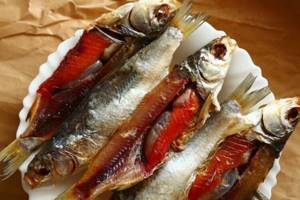
Roach became a delicacy under the Soviet Union, starting in the 1960s. In those days, dried roach was served along with caviar and cervelat. The Soviet people developed an attitude towards fish as a delicacy as a result of the general crisis of the Soviet economy and massive environmental problems. Unfortunately, the consequences of human activity have greatly reduced the carp population, which greatly affected the economy of Astrakhan, which could not sell enough fish. At the moment, through modern water purification and the closure of harmful enterprises, it was possible to gradually restore the population of this type of fish.
Roach drying process
The principle of drying roach has remained virtually unchanged for thousands of years. Only the equipment used during the procedure has changed. Only first-class roach is suitable for drying. Fresh fish is cooled to a temperature below 0 degrees, and frozen fish is defrosted. Exuding mucus from dead fish must be carefully removed. To do this, the roach is carefully washed several times under running water. If you neglect this procedure, then when salting fish, a film will form on its body, which will deteriorate the quality of the finished product and interfere with salting.
At the next stage, the fish are sorted. To ensure that all fish from a batch are salted evenly, all roach are sorted by size. For this, it is selected in a special way: the fish in salting should not differ in size by more than 2 cm. The fish selected according to the required size are distributed into batches, each of which undergoes a separate salting process. The salting process itself is as follows: initially, a brine solution is prepared, which is poured into a third of the salting container. Next, the washed fish is placed in this container, after which everything is covered with salt. The amount of salt is calculated as a percentage of the total weight of the fish. So, it is necessary to add salt no more than a fifth of the total mass of the prepared product. Only after this does the salting procedure begin, and the substances released by the fish during the salting process are used to prepare the next batch. Accordingly, salting containers can function without special treatment for several batches of fish. At the same time, the quality of the product does not deteriorate, thanks to the beneficial substances remaining from previous batches.
Salting time
Fish weighing up to 200 grams is salted for at least 36 hours. The roach weighs about 500 grams and is salted for five days. In the middle of the process, the container with the salted roach is stirred in order to achieve a uniform salt concentration in the container. This process in professional language is called “edging”. If necessary, in the middle of the preparation process, the fish is additionally salted. The procedure lasts until the salt concentration in the fish reaches the required 5%. Next comes the drying process: the roach is strung on special rods or twines and washed with fresh water to remove excess salt from the surface of the fish. Then the roach is washed in a vinegar solution in order to disinfect the fish. Only after this are the products sent for drying . In ancient times, the process of drying fish took place in the open air, thanks to the Sun and wind. Then, the fish was hung on special poles and left to dry until its salinity reached 11% and humidity 45%. The whole process took up to two weeks. Now fish are dried artificially, which takes no more than 3-4 days. The fish are left to dry in special industrial tunnels, in which a hot, dry microclimate is constantly maintained, and the air is regularly heated and circulated.
Delicacy for different countries
In some countries, roach is not recognized as a beer snack. It is believed that dried roach interrupts the taste of beer and prevents it from opening. In other countries, snacks and beer are more tolerant. If we talk about Russia, here the roach is loved, revered and often consumed with beer, along with other fish snacks, and you can buy dried roach in our “Fish of My Dreams” store.
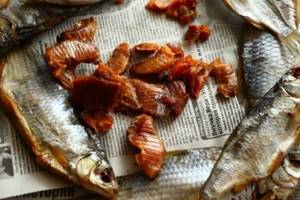
There is an interesting fact about the vobla: not so long ago, archaeologists found and excavated an early medieval Novgorod beer hall. Among all the beer paraphernalia, archaeologists found high quality fish scales on the floor of the establishment. During the research, it was discovered that the vast majority of scales are the remains of dried roach.
